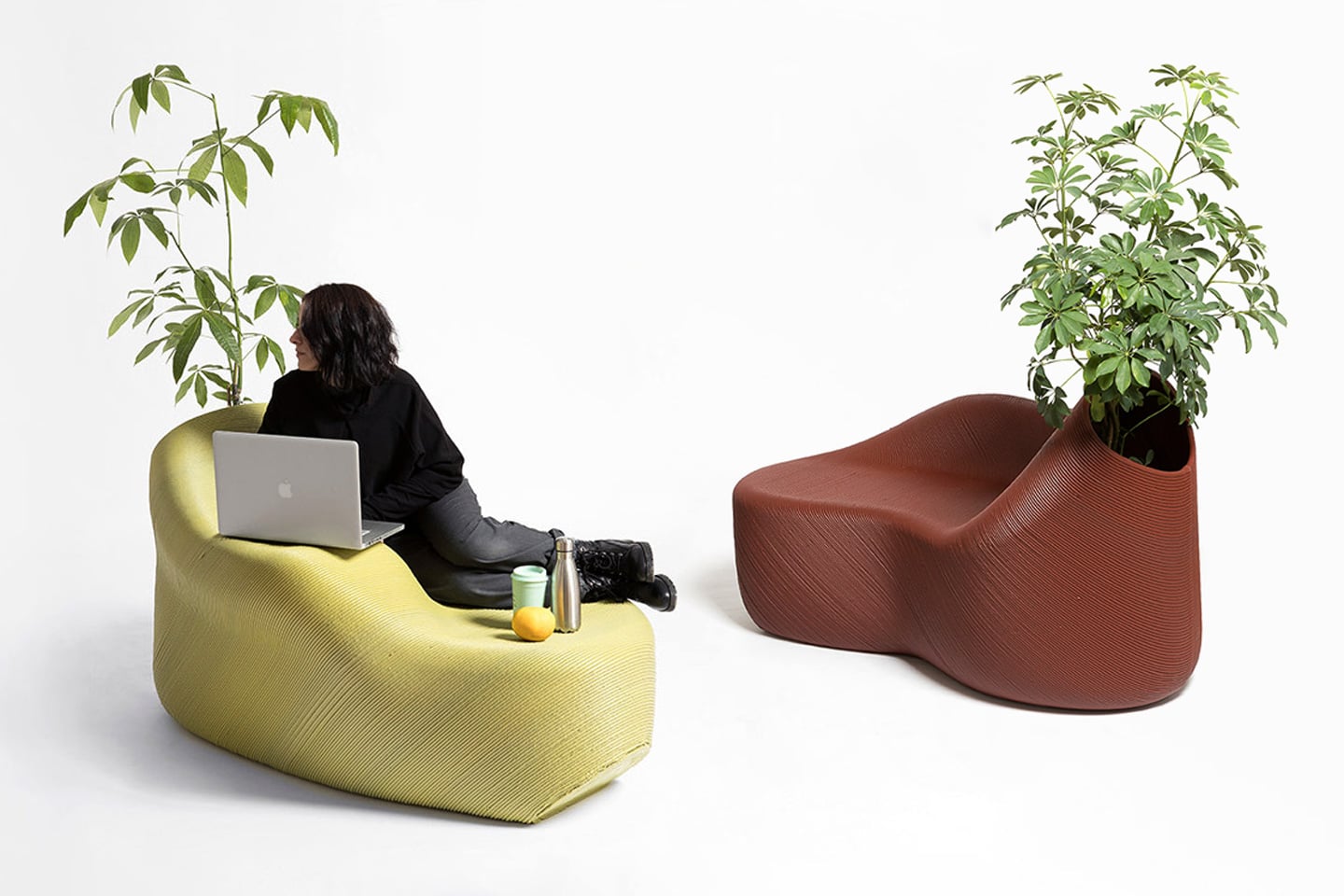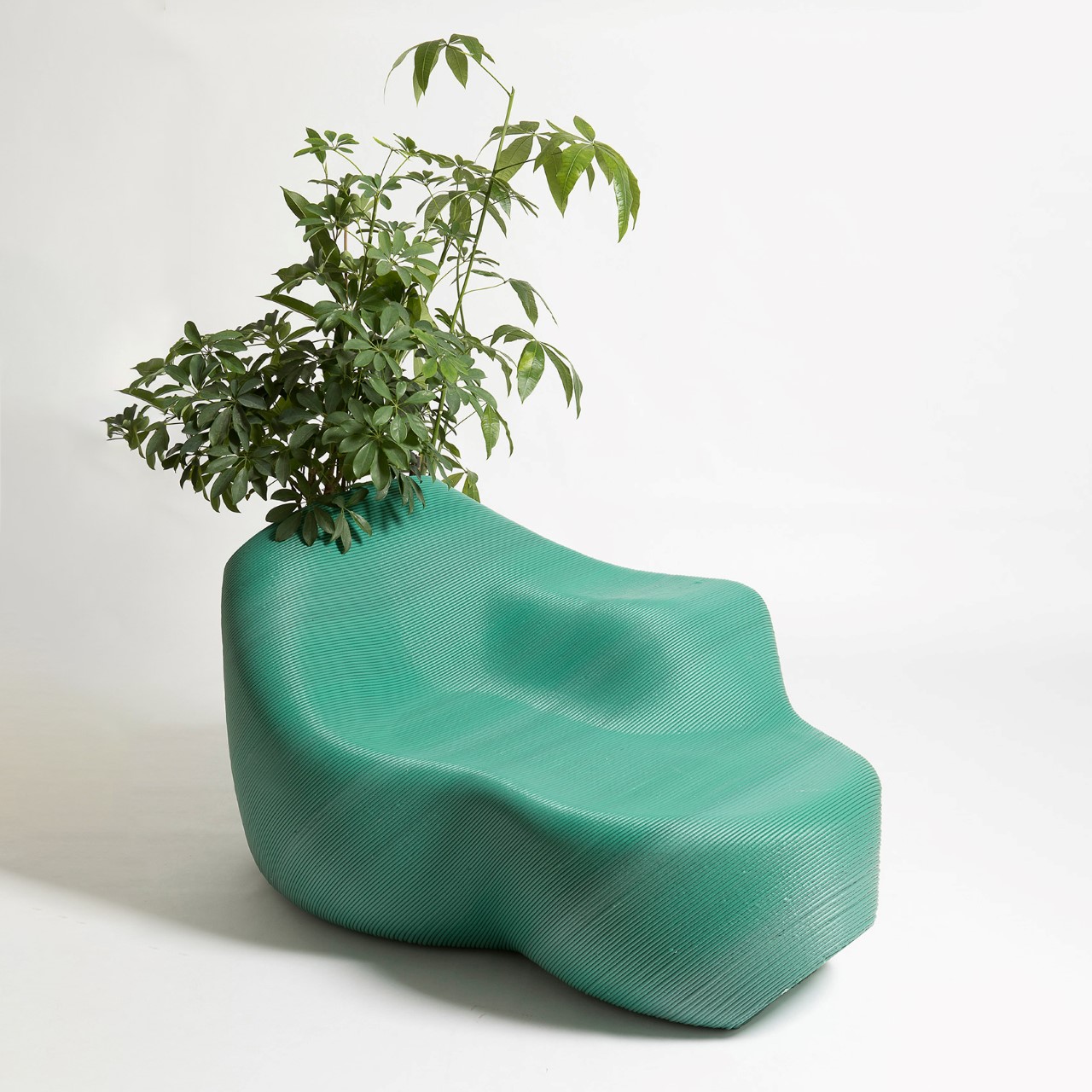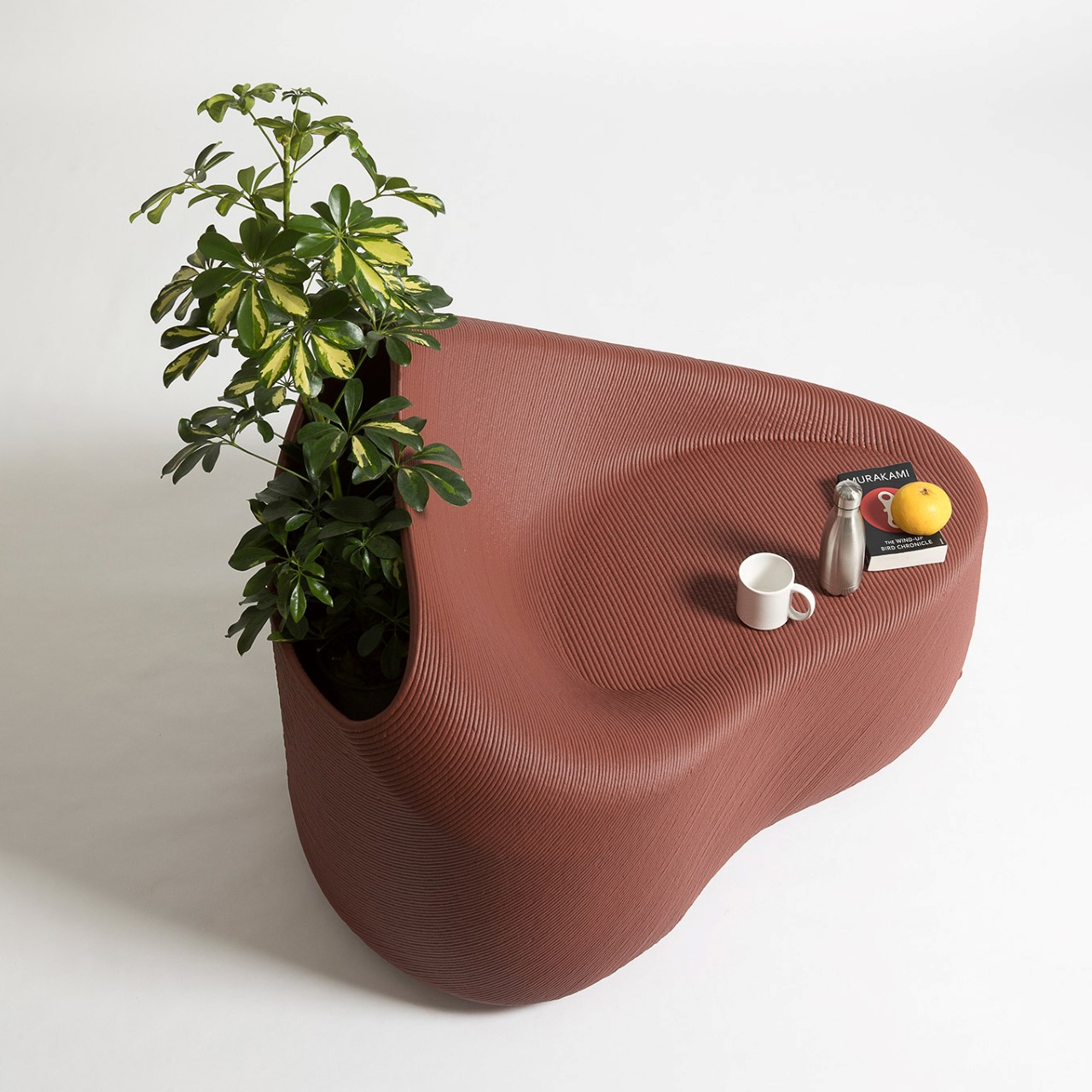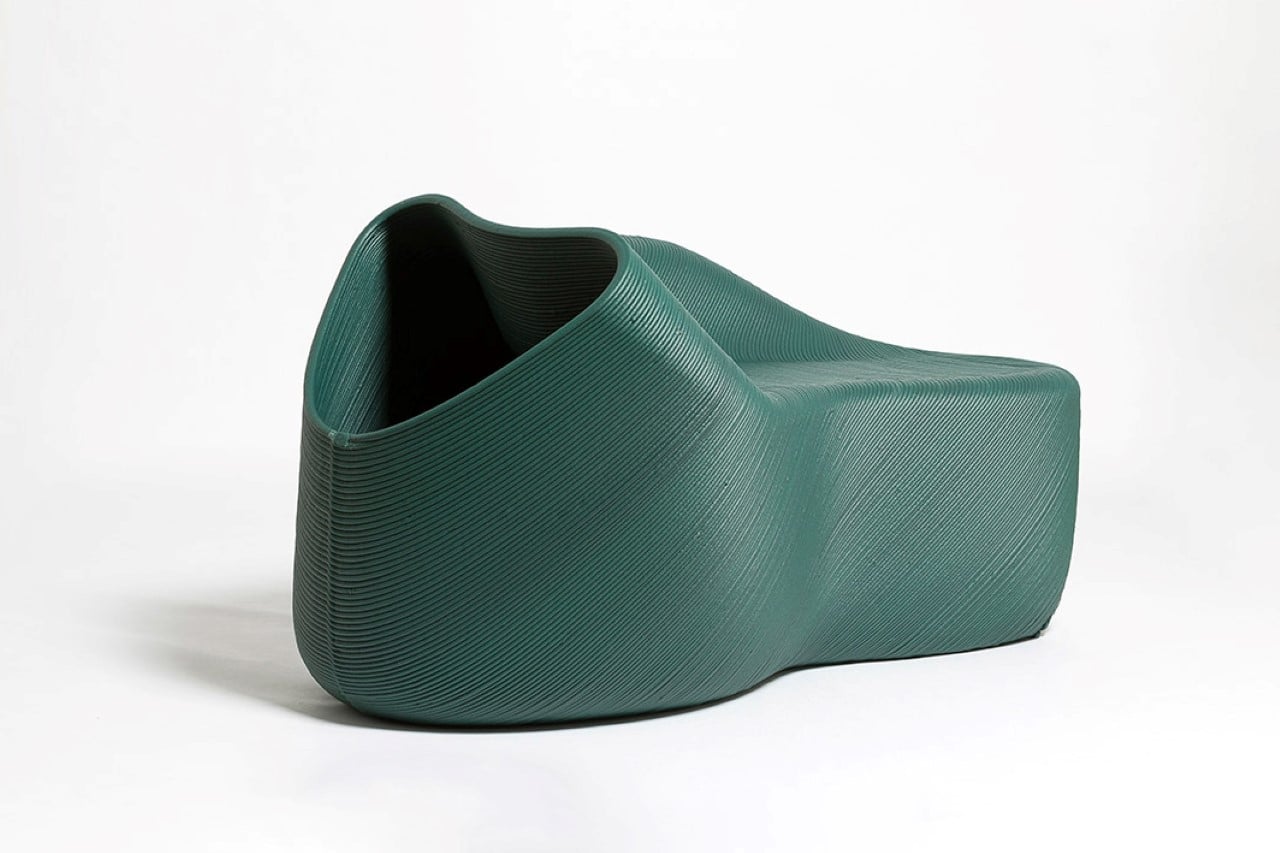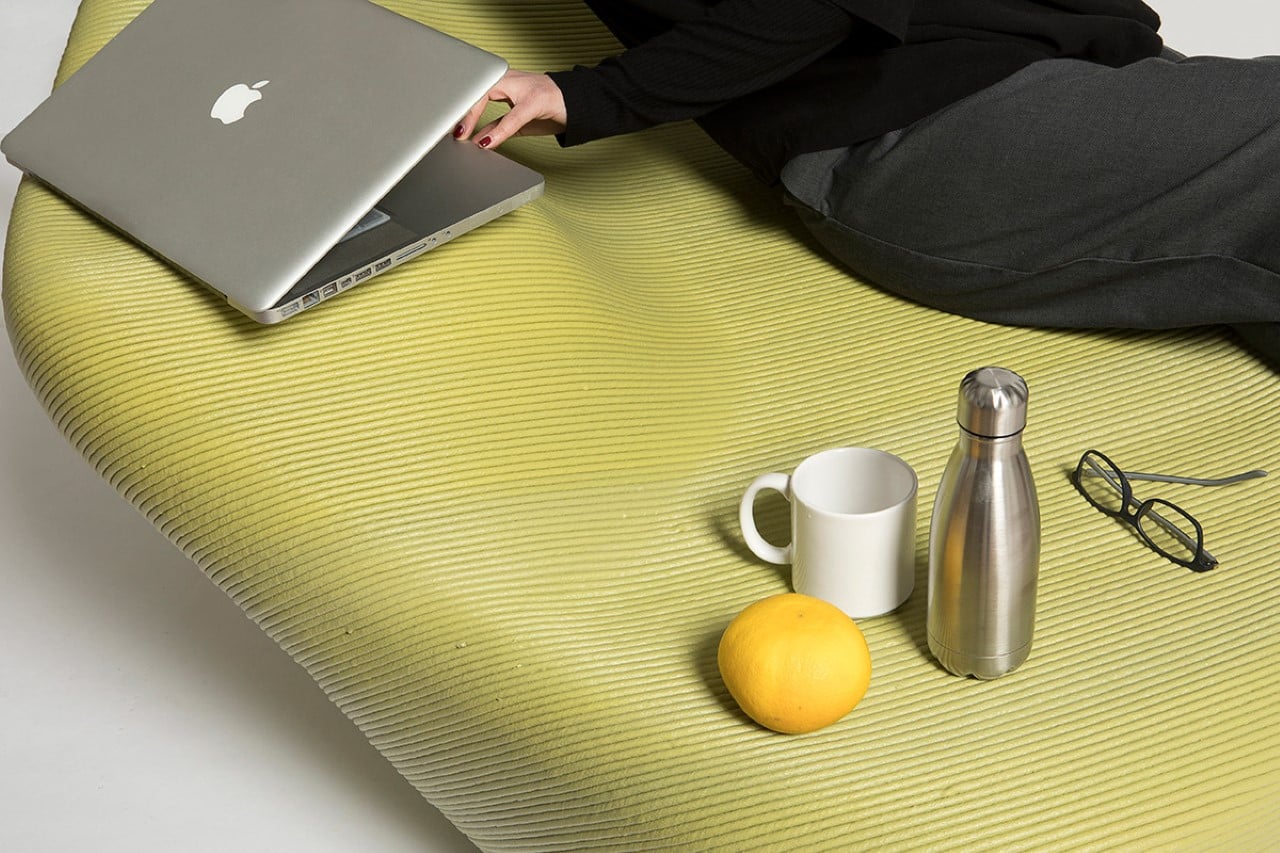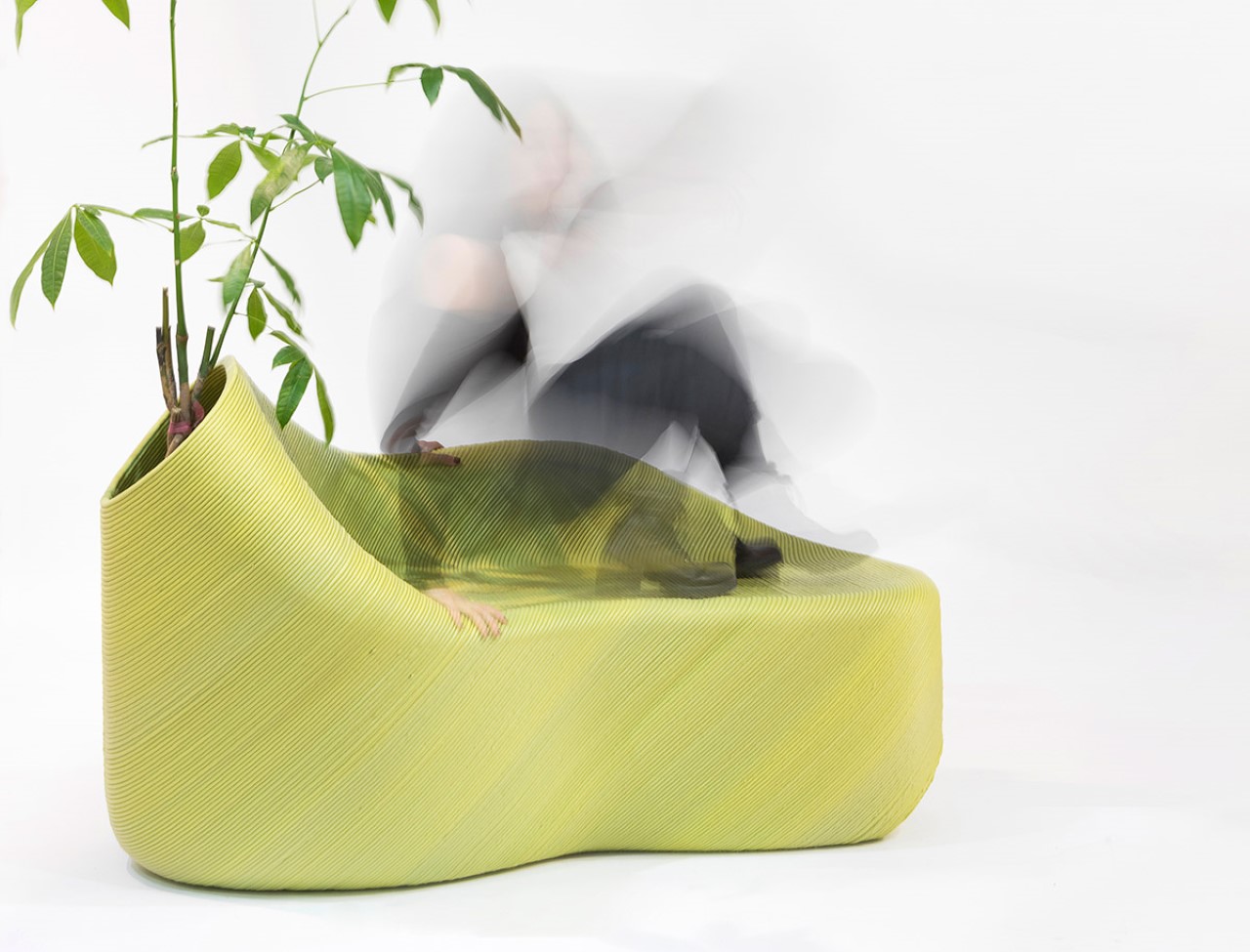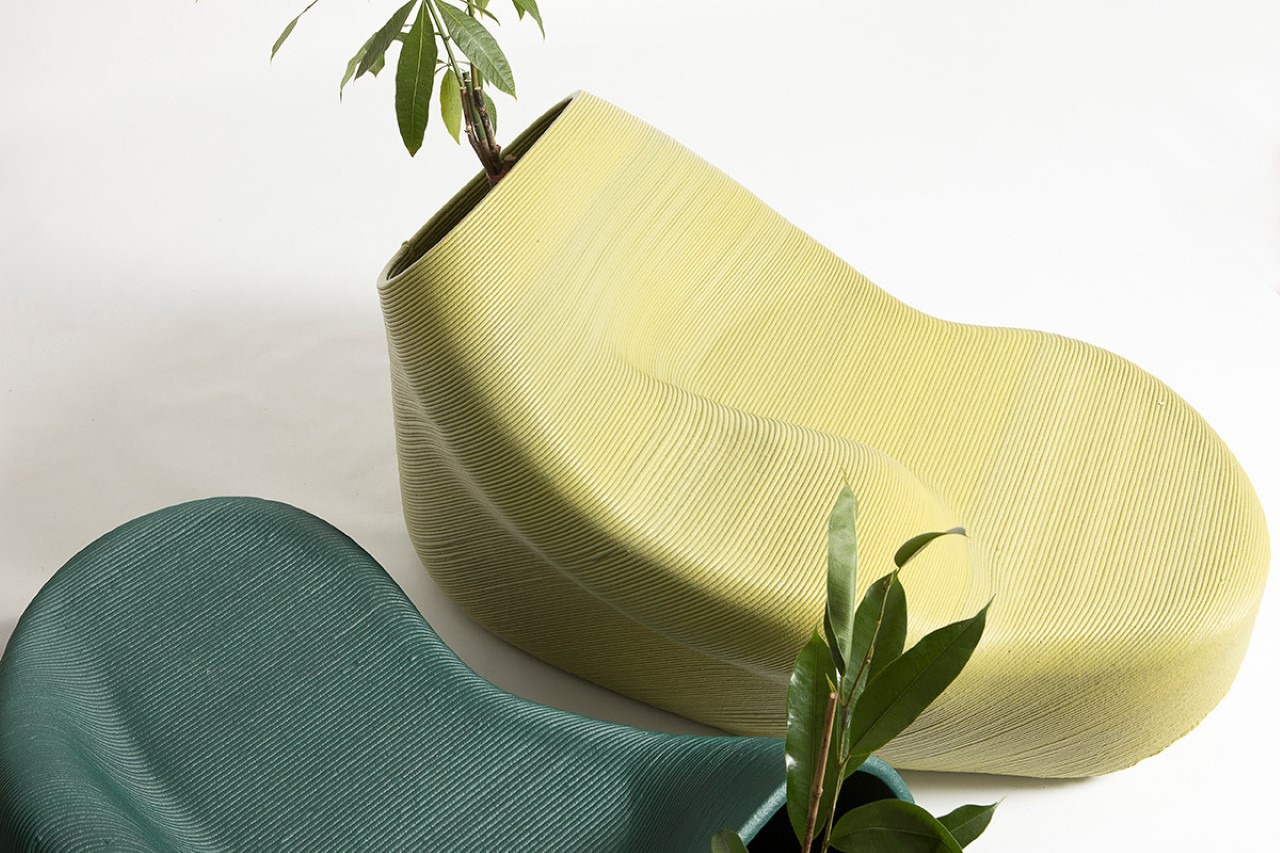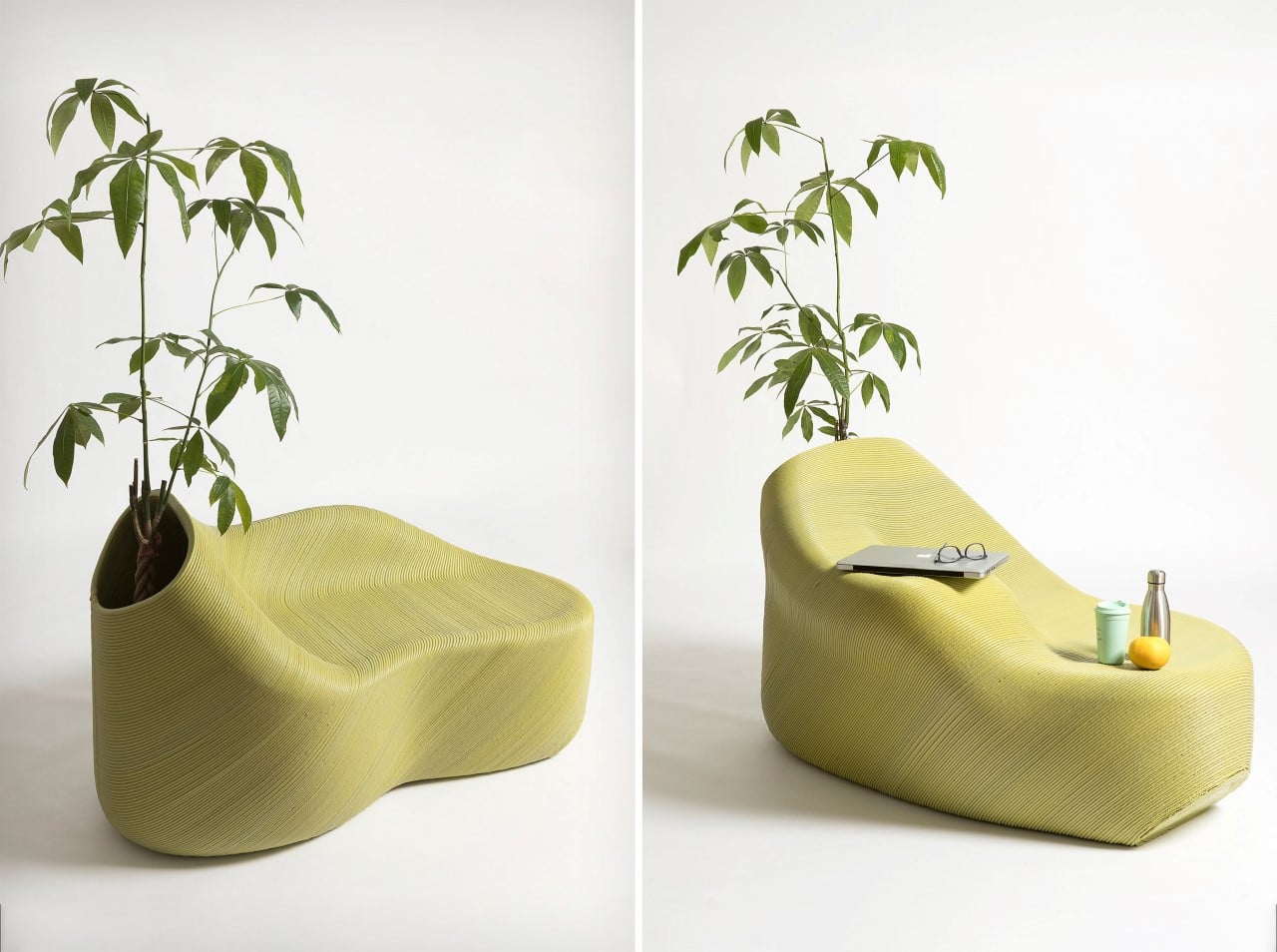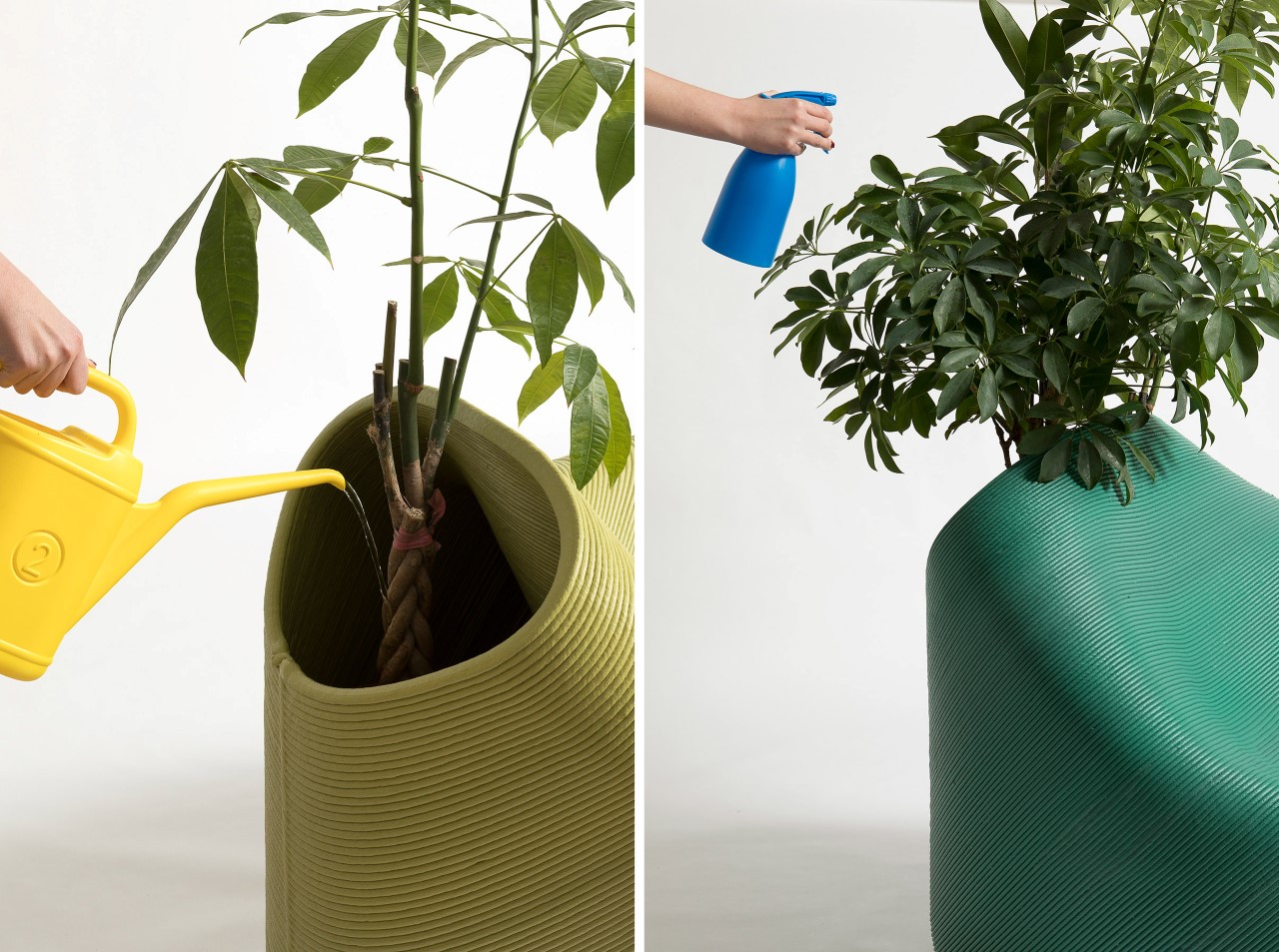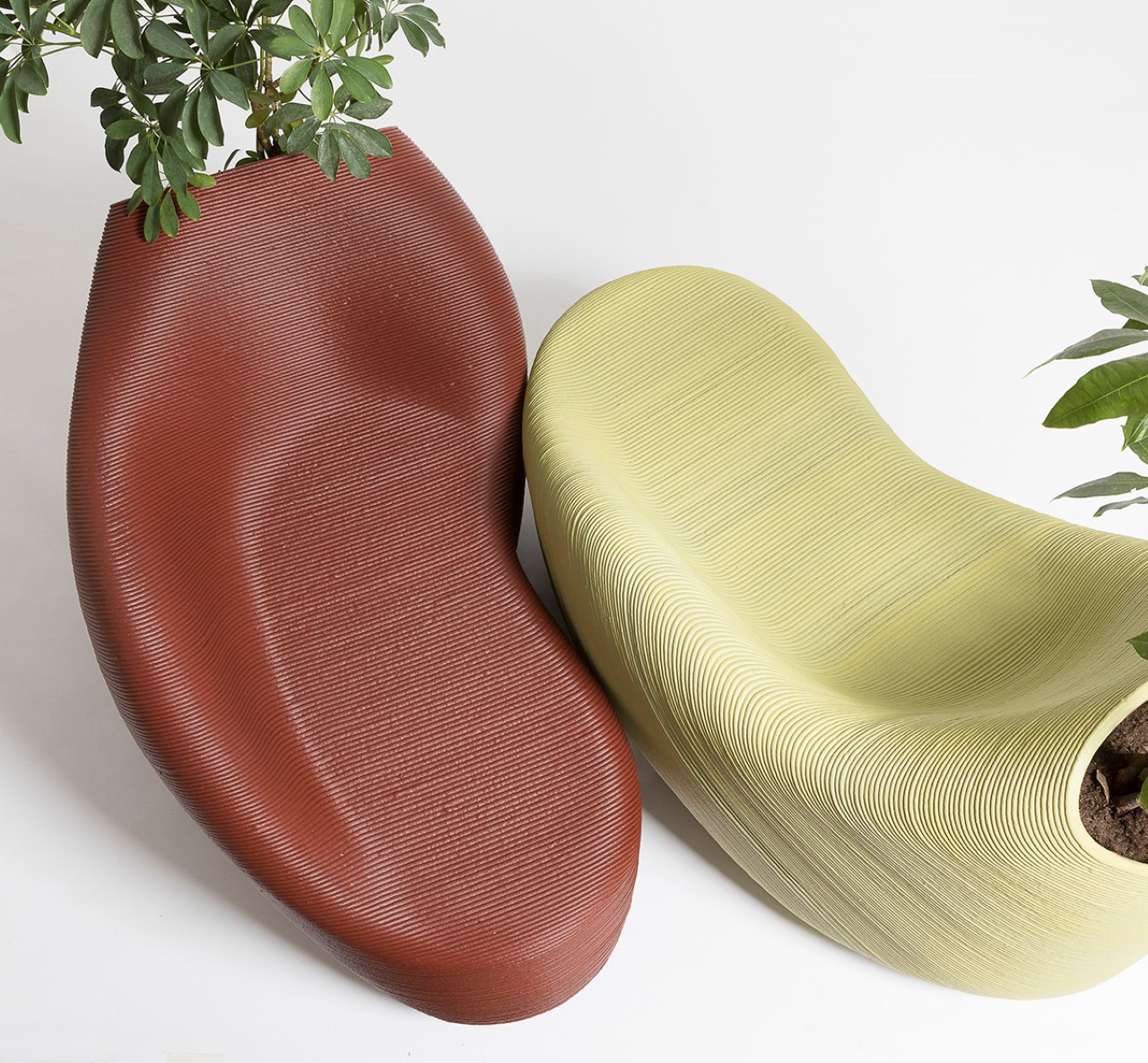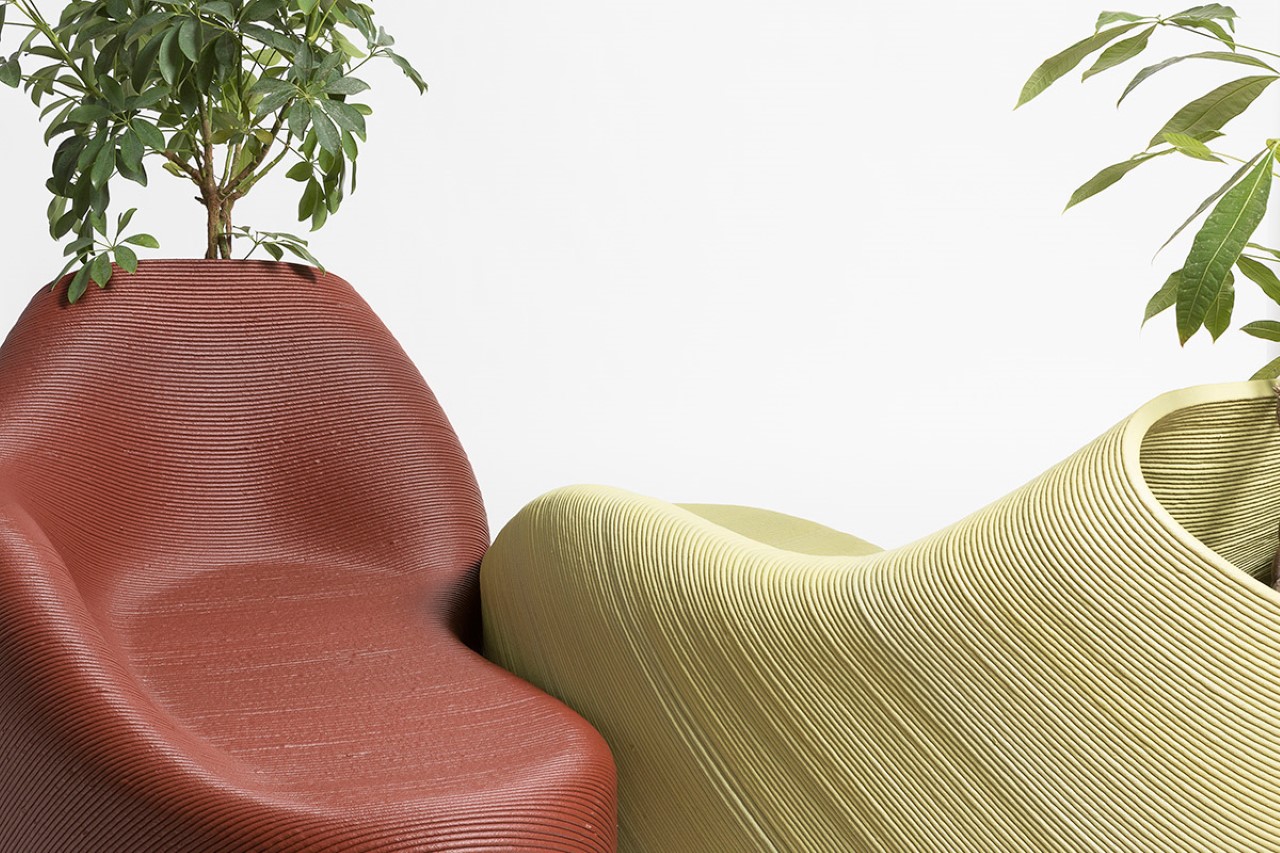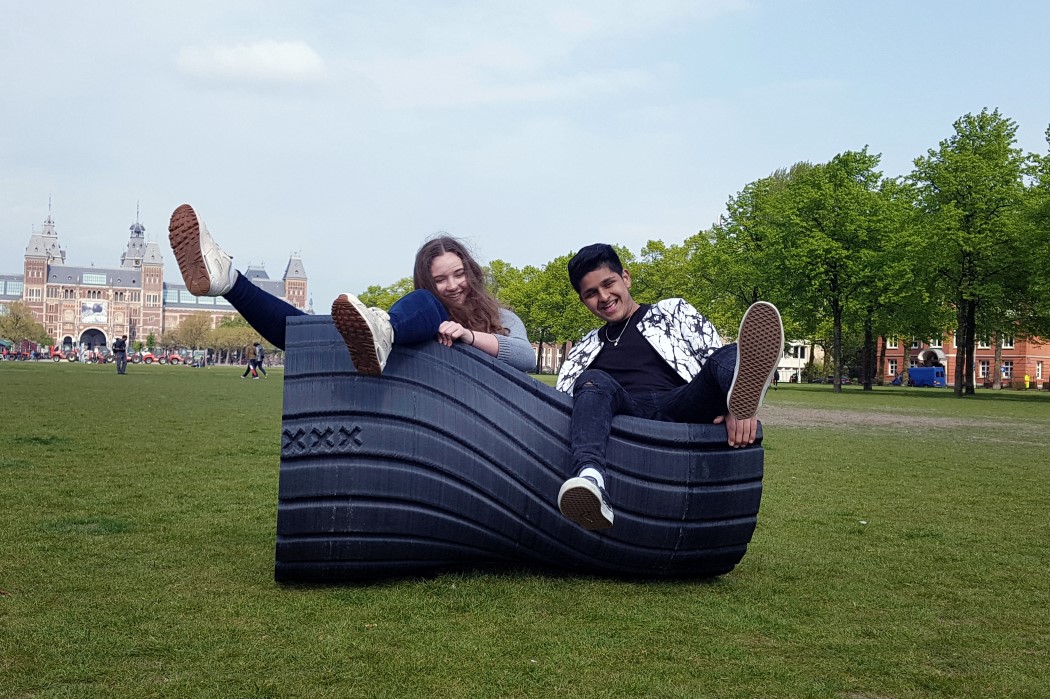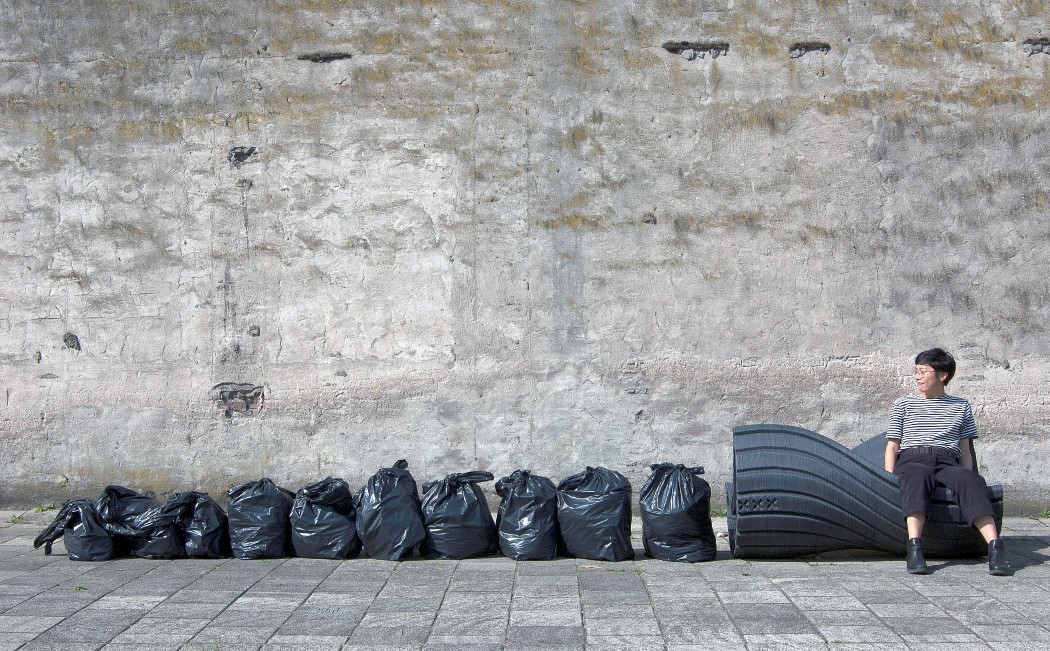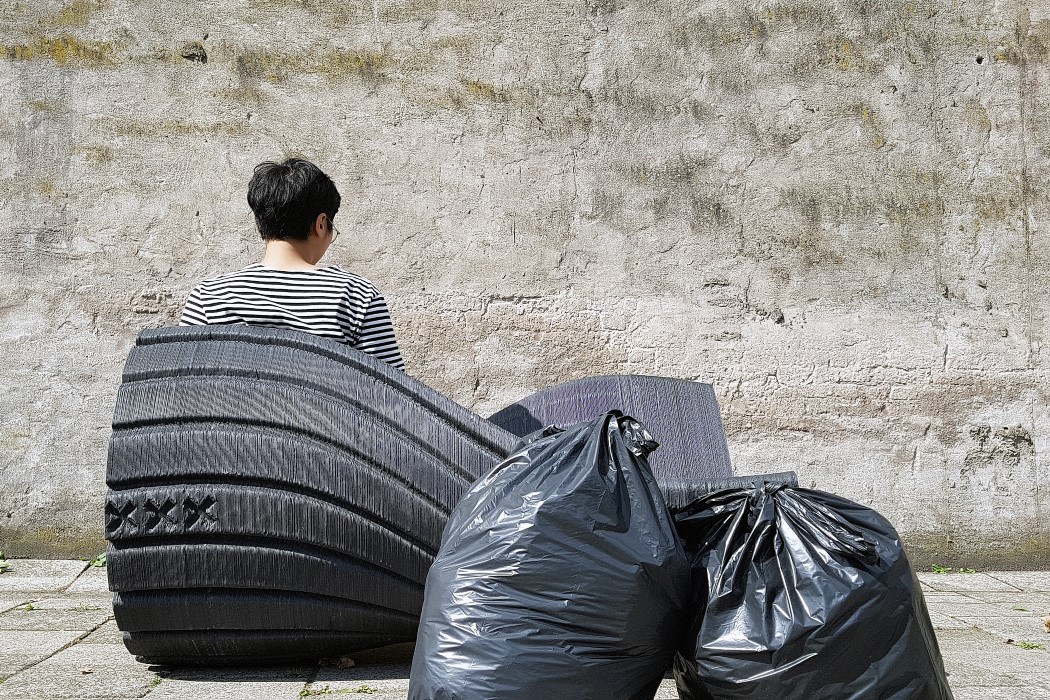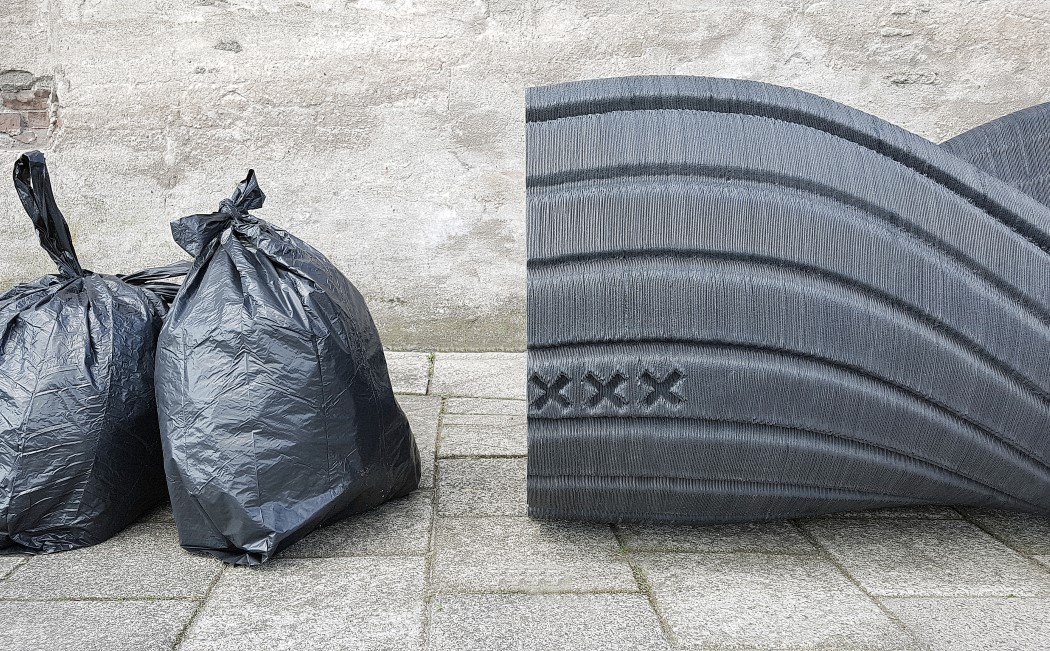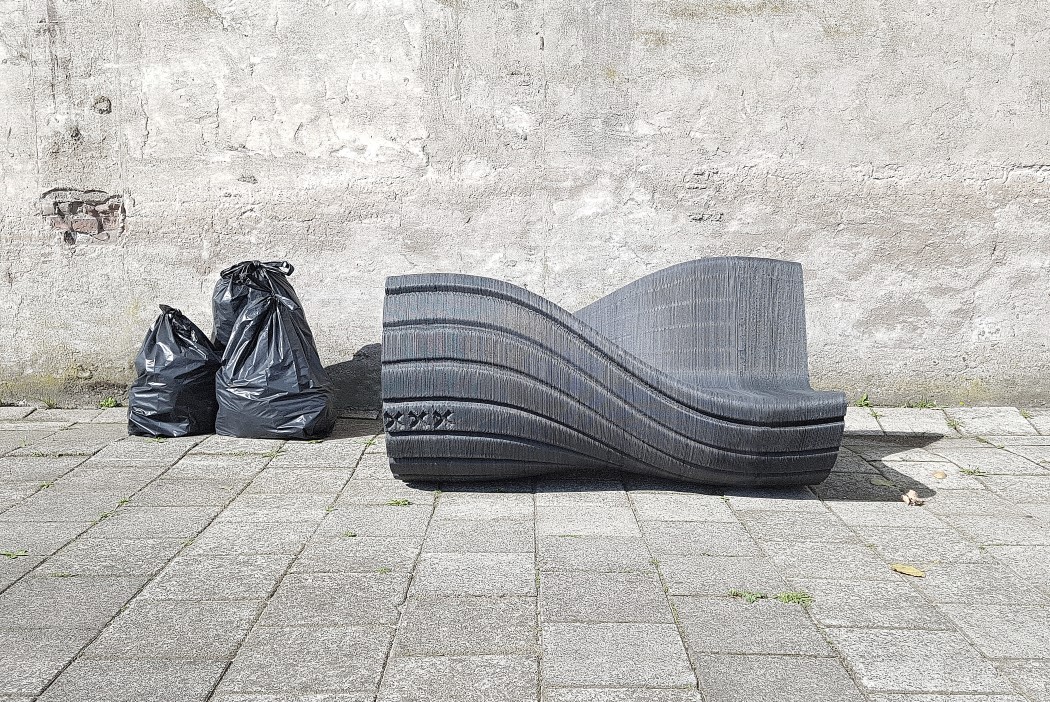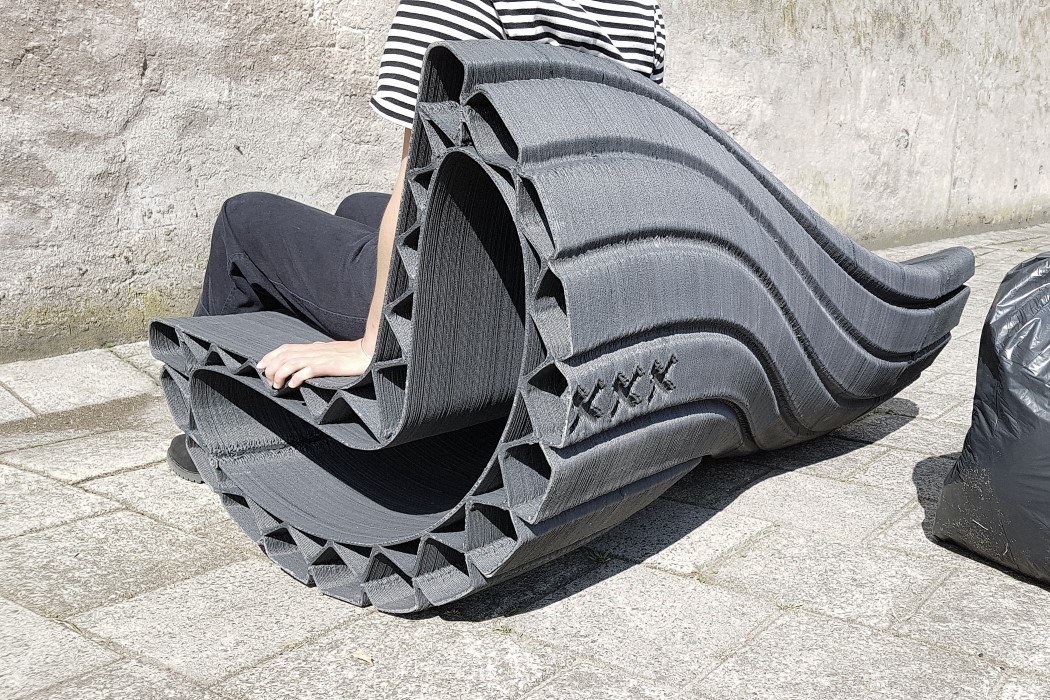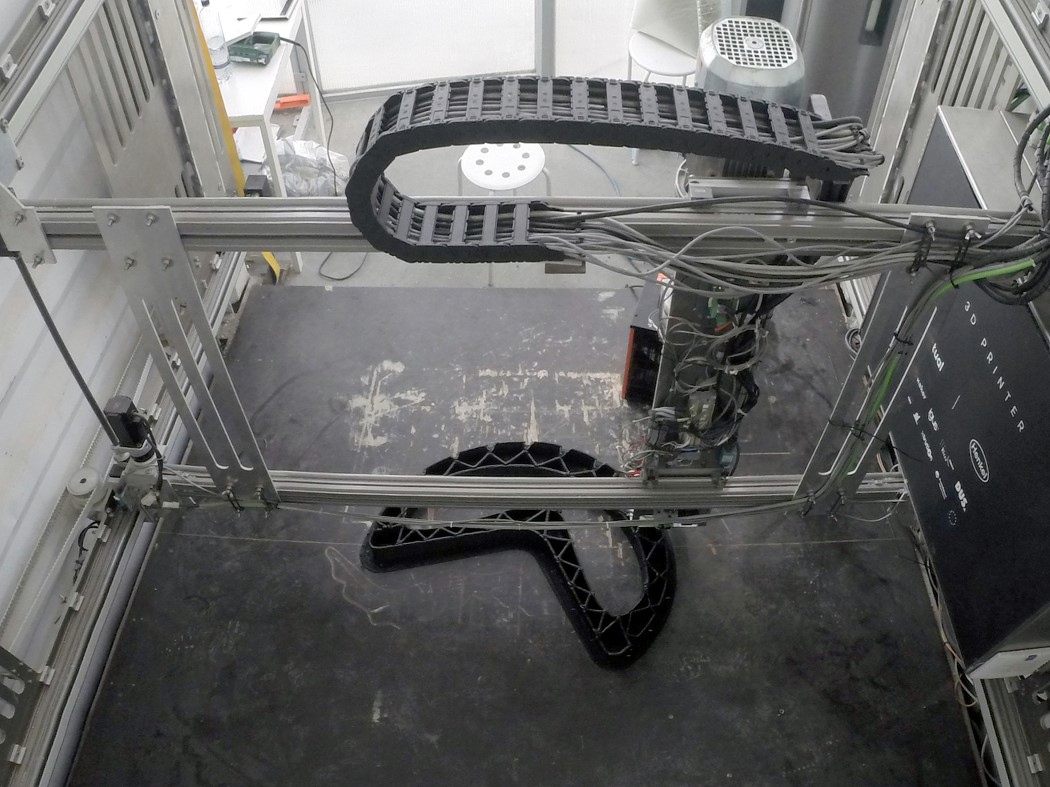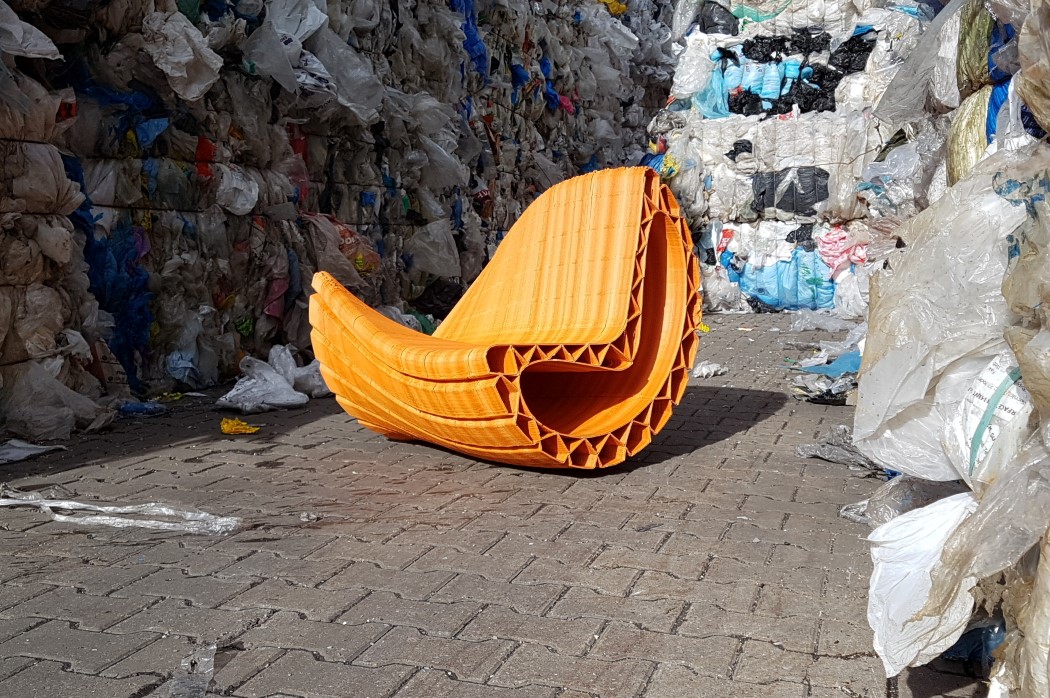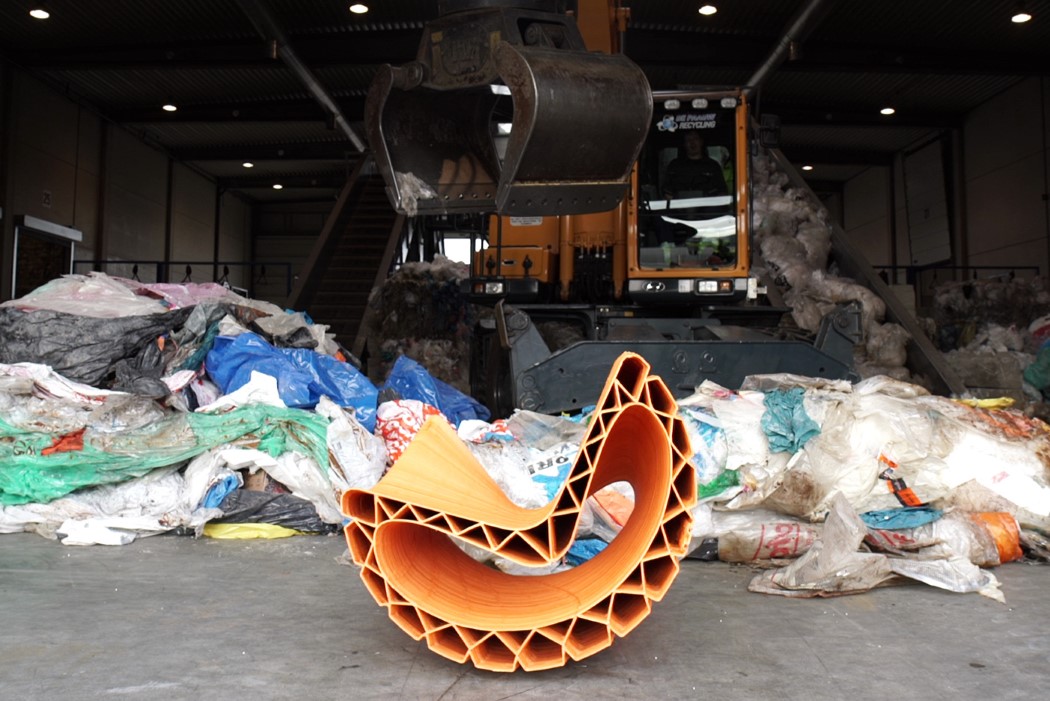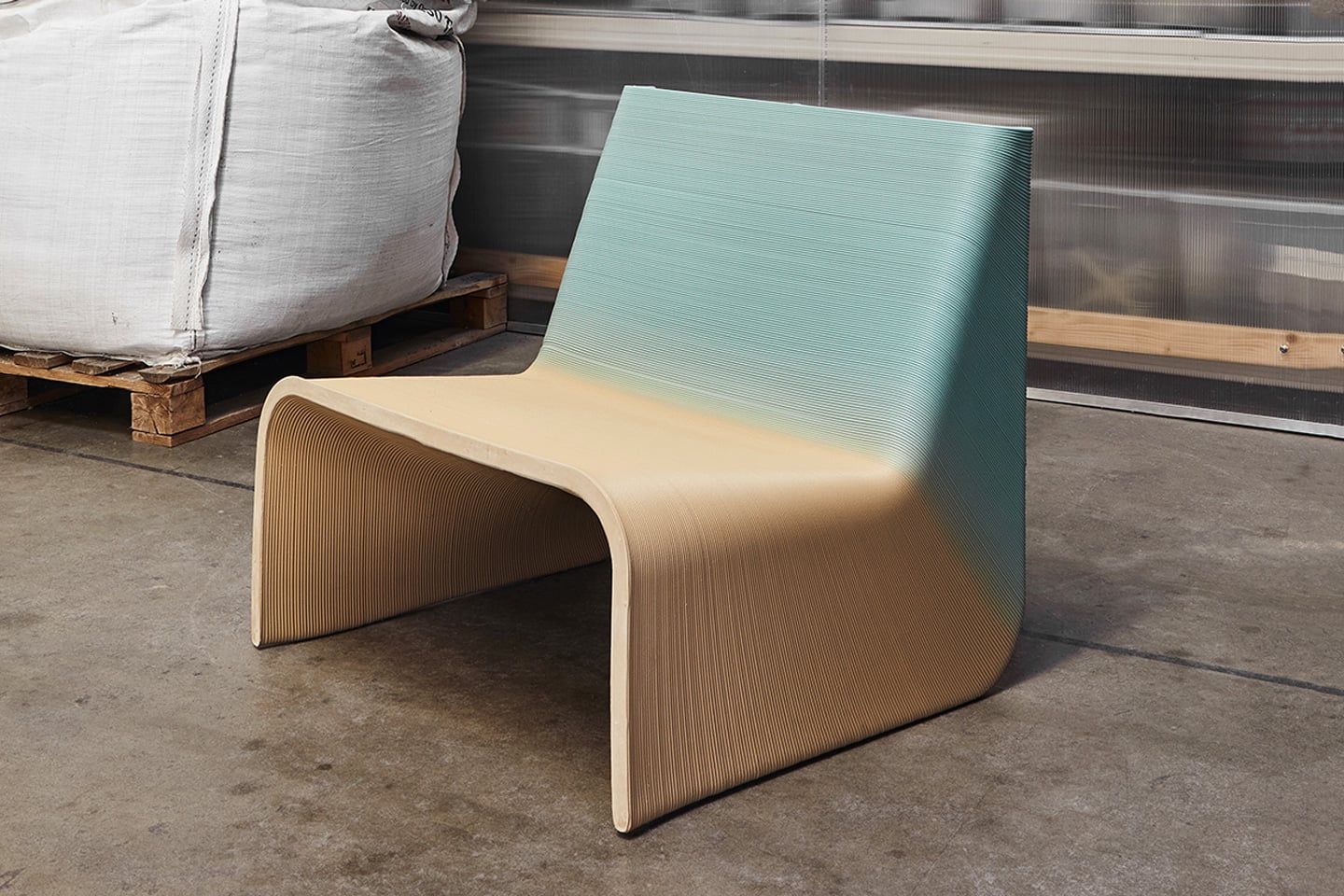
The Ermis Chair by The New Raw displays the combination of human ingenuity with robotic accuracy to turn plastic waste into robot-aided 3D printed furniture.
Armed with large quantities of raw material in the form of plastic waste, The New Raw decided to close the loop and turn it into actual useful products. 3D printing large-scale furniture isn’t something that’s entirely new to the Rotterdam-based design outfit. Panos Sakkas and Foteini Setaki of design studio The New Raw have been known to print massive furniture pieces using the proprietary robotic printing arms that they designed and built on their own. Working with the robot and experimenting with new plastics requires constant experimentation, which then results in a lot of plastic waste. Determined to not let the waste end up in some landfill, Panos and Foteini decided to repurpose the plastic waste into furniture. The Ermis Chair is a result of that grand experiment, with its uniquely beautiful form and that absolutely gorgeous natural color gradient that comes from the extruded plastic filament gradually changing color through the print.
Designer: The New Raw
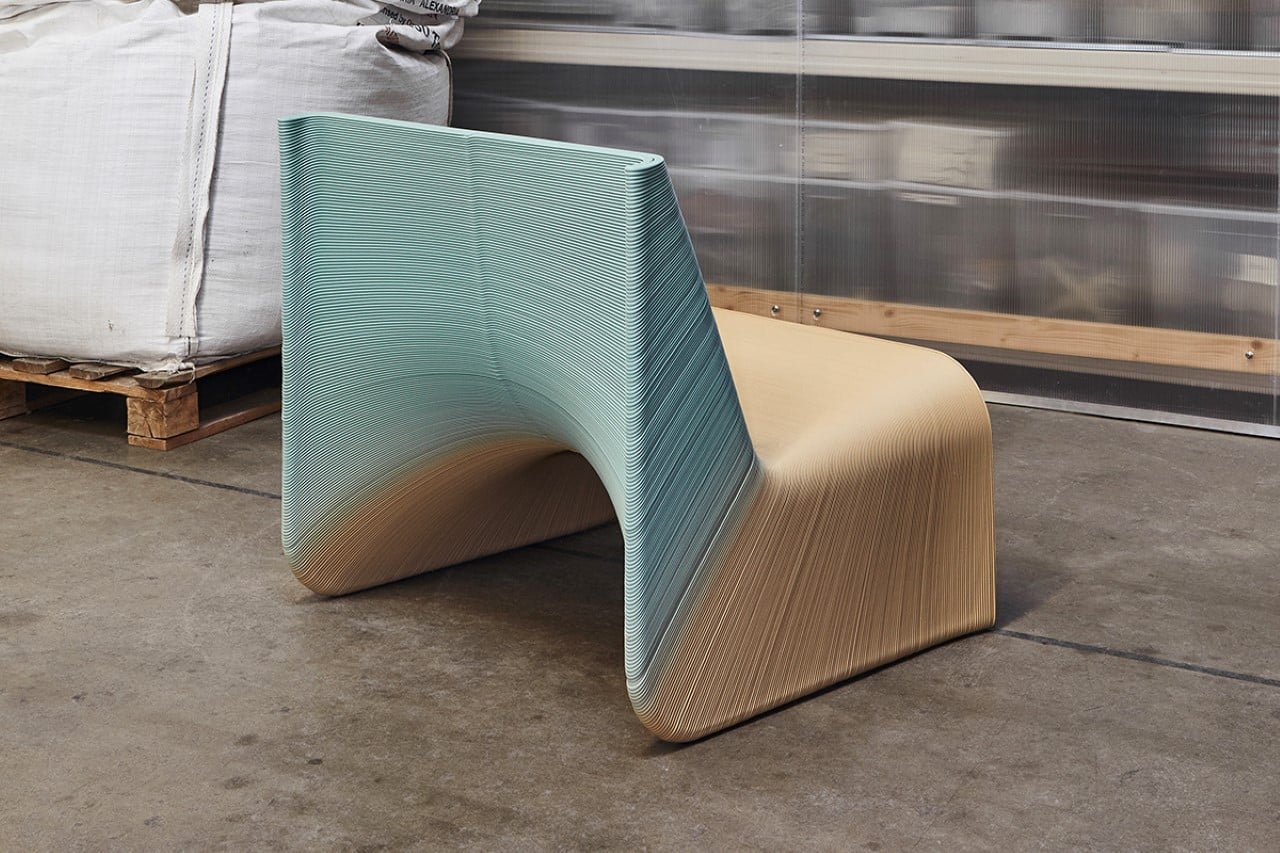
It feels strange to see a chair that massive and to think that it was built using 3D printing. Something incredibly unique about the Ermis’ design are those horizontal print lines. Firstly, they’re absolutely massive, which makes one wonder how large the nozzle on the robotic 3D printing arm could possibly be. Secondly, if you look at the side profile, the lines actually change direction, going from vertical on the front to diagonal, and finally horizontal at the top. It’s quite difficult to imagine how the designers managed to pull this off, especially considering that aside from actually rotating the chair WHILE it was being printed, the Ermis sports a beautifully pristine finish with little to no proof of any support structures.
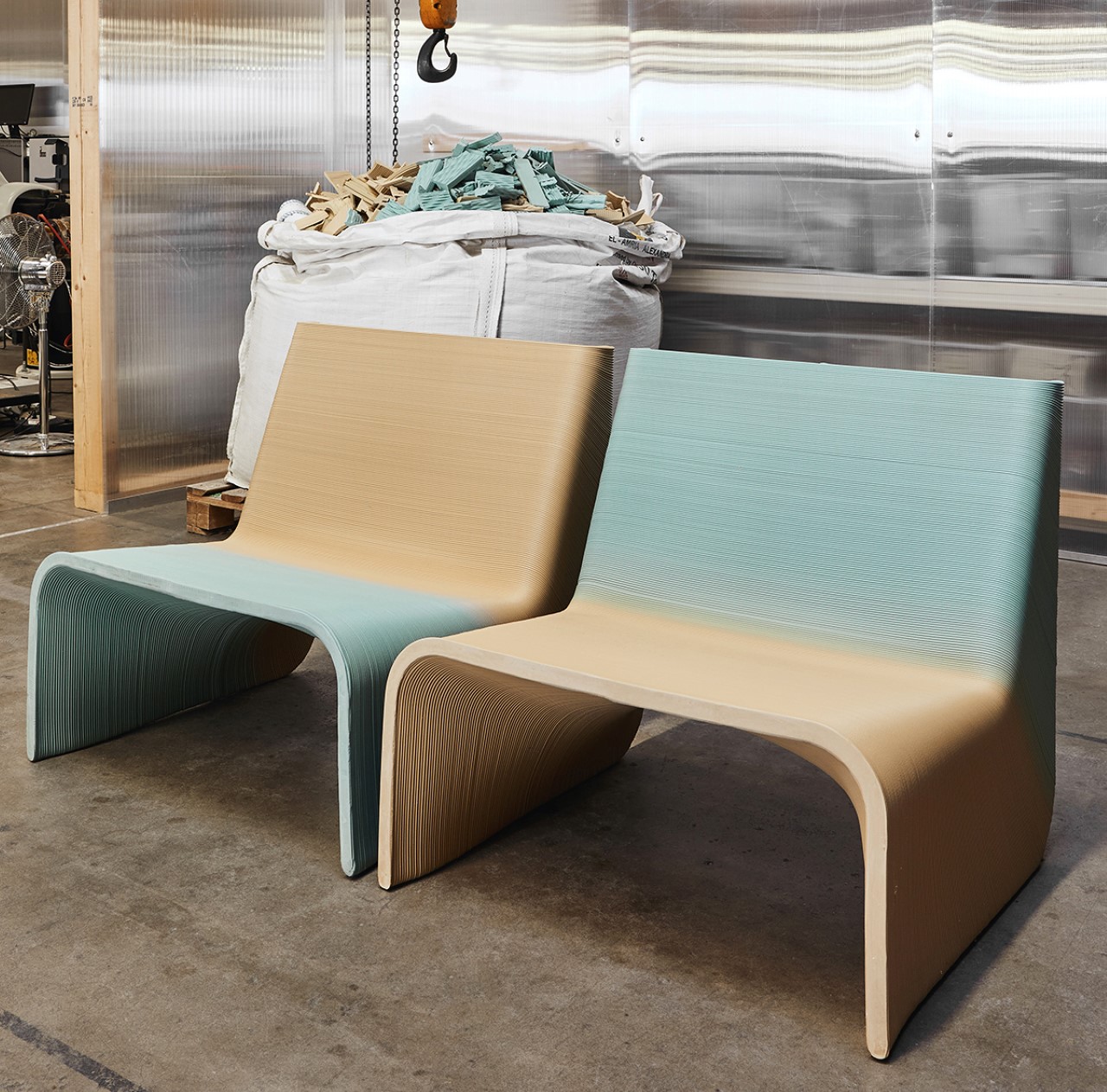
The Ermis isn’t just a marvel of engineering and sustainability (recycled plastic, remember?), it’s also a phenomenally pretty chair. That gradient of light brown to blue has an instant beachy feel, with colors resembling the sand and the water. Look behind and you’ll see a sack filled with plastic pieces that served as the raw material for the Ermis chairs.

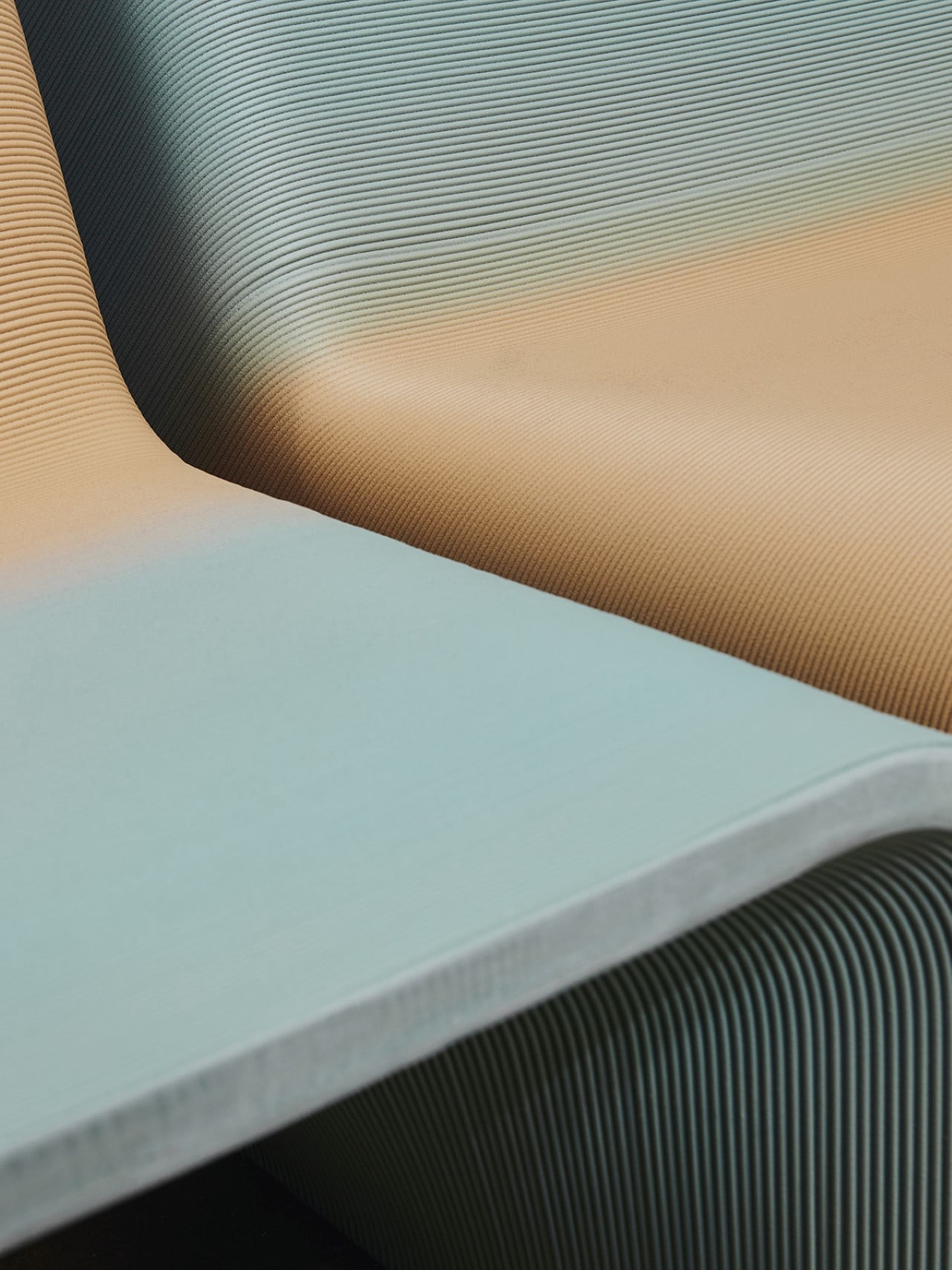
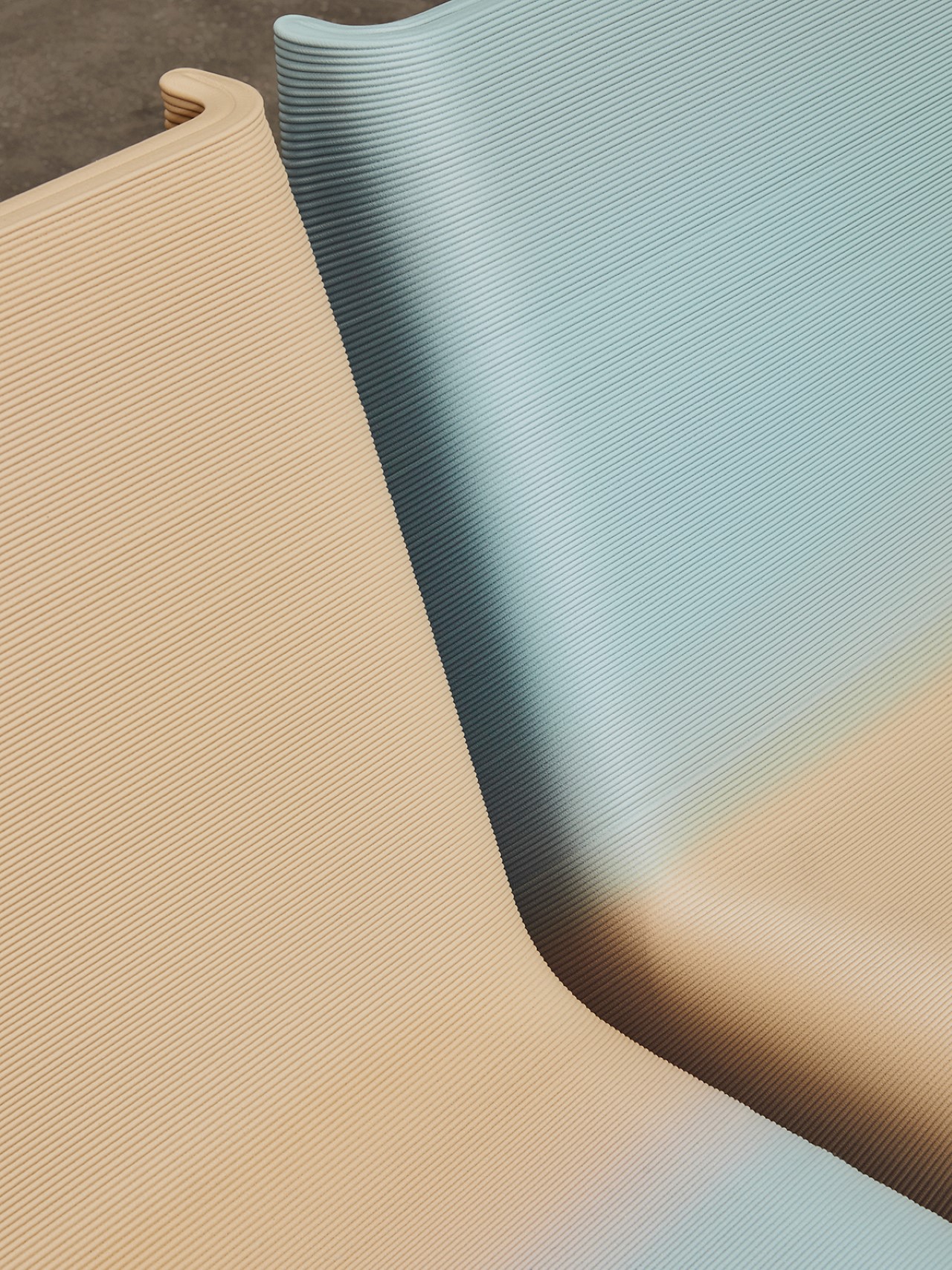
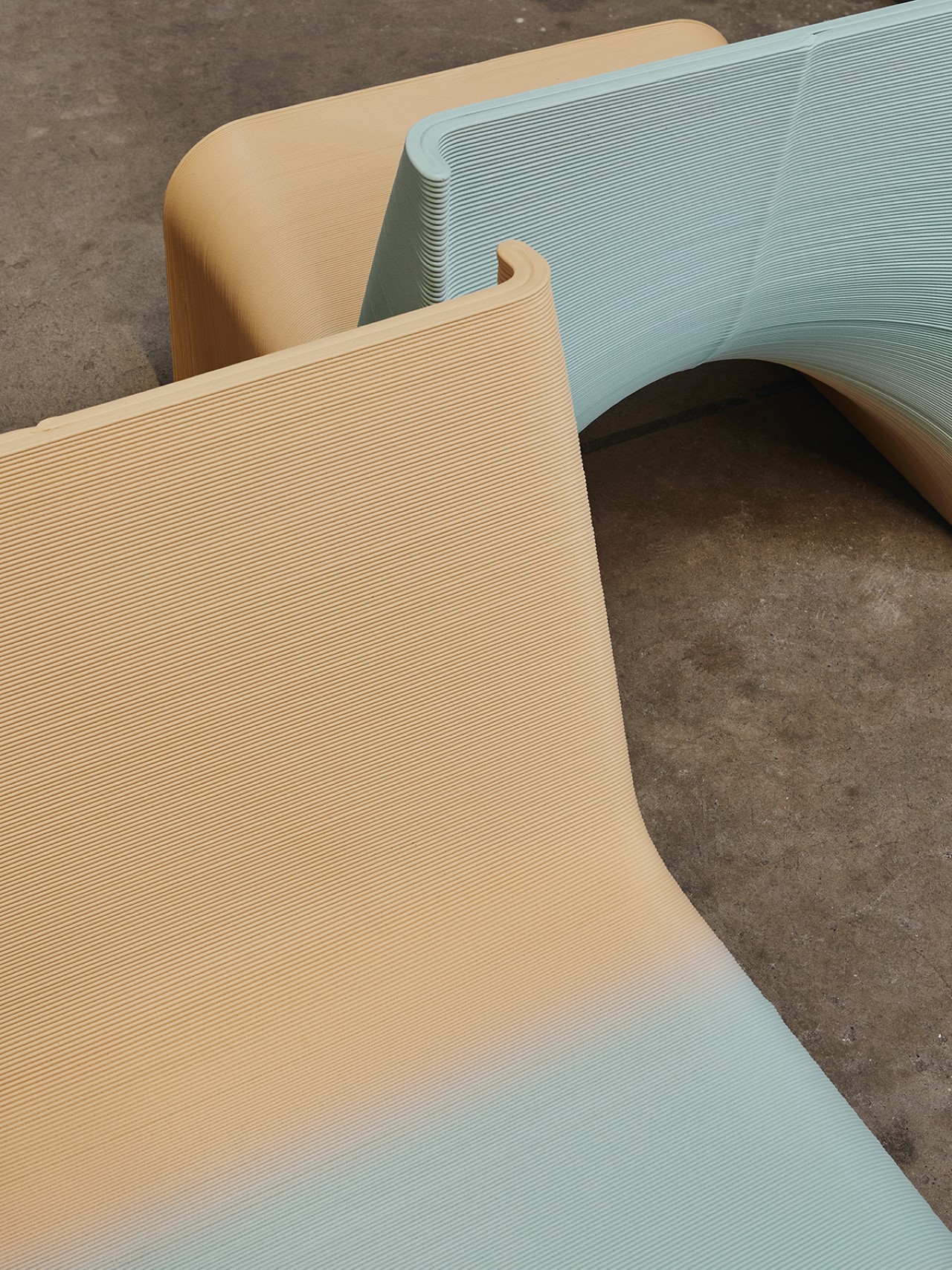
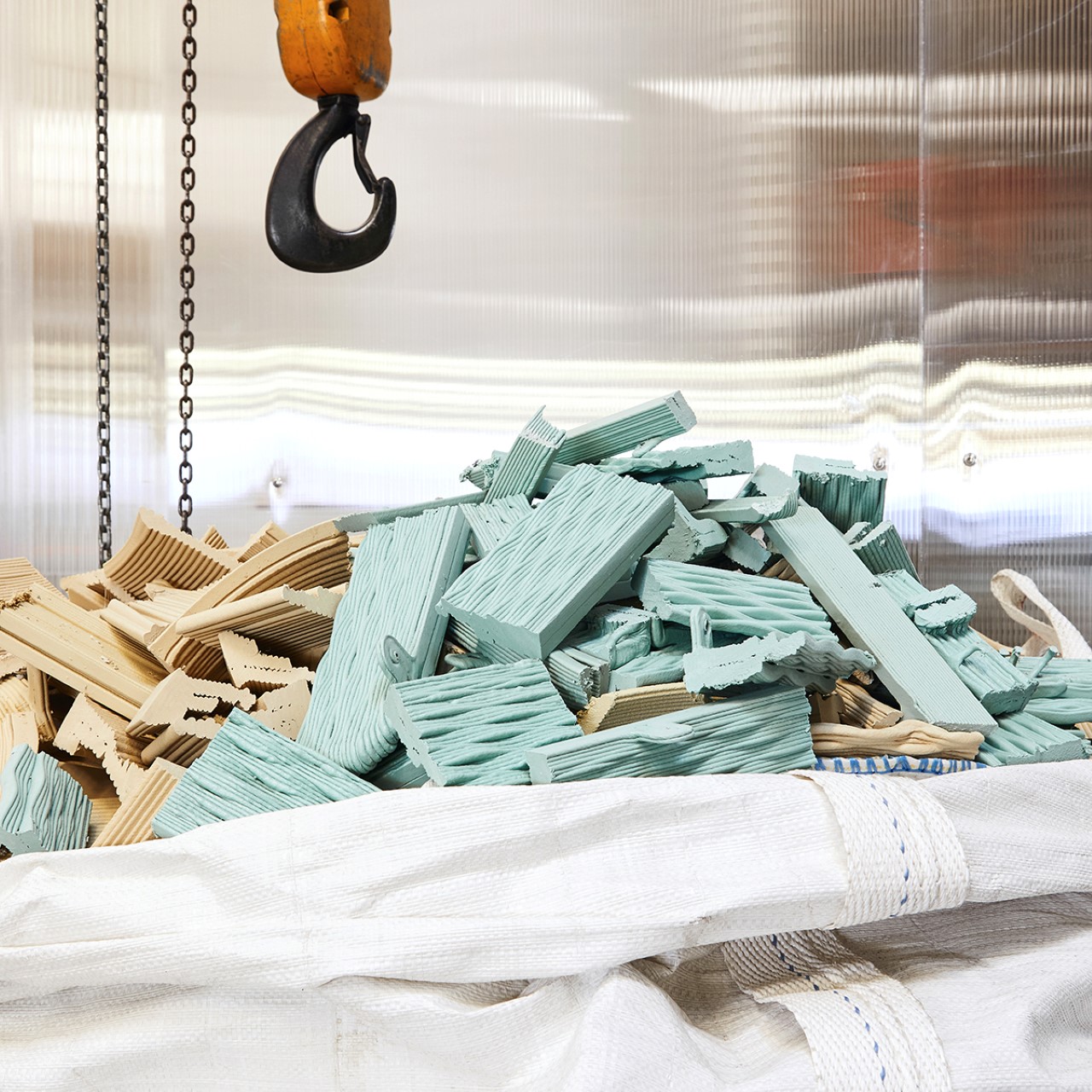
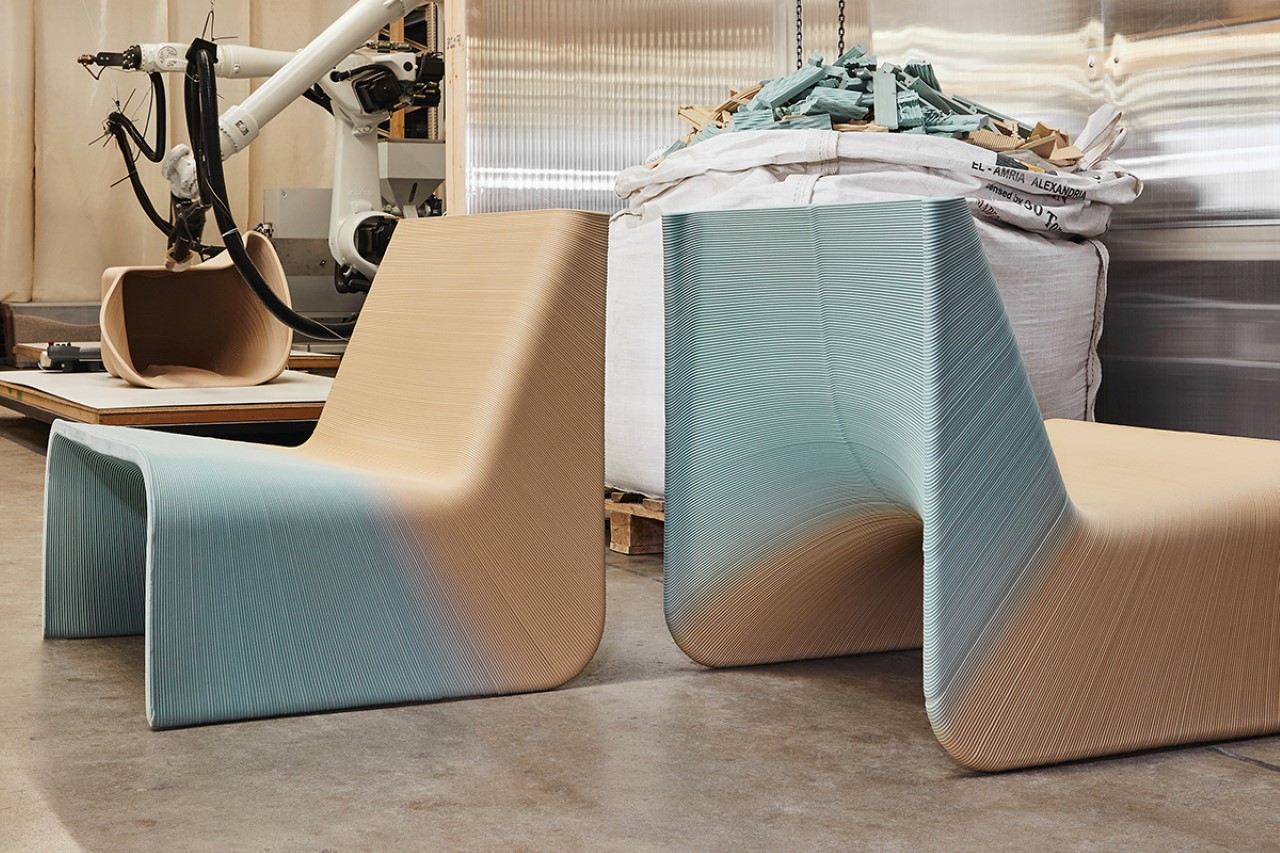
The post Sustainable 3D-printed chair was built by designers using plastic waste generated by their own studio first appeared on Yanko Design.
